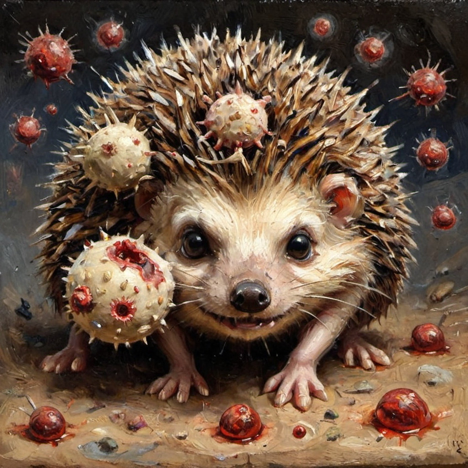Epithelial cells, which line the surfaces of the body, are fixed in place, while mesenchymal cells, which make up the body’s connective tissue, are loosely packed and can move around. During embryonic development and wound healing, cells can transform from epithelial cells into mesenchymal cells, a process known as mesenchymal transformation (MT). Unfortunately, MT is also a useful strategy for cancer cells, whose goal is to spread throughout the body. While studies have shown that cancers that undergo MT are more likely to resist immunotherapy, exactly how these migratory cancer cells are able to avoid immune capture is unknown.
“This is a problem, as we cannot overcome what we don’t understand,” said former Damon Runyon Physician-Scientist Nicholas C. DeVito, MD. But recently, after seven years of study, he and colleagues at Duke, University of North Carolina, and University of Pennsylvania have had a breakthrough.
 The process of MT is facilitated by the Hedgehog signaling pathway, which tells stem cells what kind of cells to become. (This pathway is crucial for embryonic development, and earned its name because fruit fly larvae missing the key signaling molecule develop abnormally stubby bodies, like hedgehogs.) Since MT and therapy resistance seem to go hand-in-hand, the team suspected that this signaling pathway might also play a role in "turning off" immune response. Now, they have identified the culprit: a signaling molecule in the pathway called Gli2, which recruits other molecules to exhaust and ultimately disable immune cells.
The process of MT is facilitated by the Hedgehog signaling pathway, which tells stem cells what kind of cells to become. (This pathway is crucial for embryonic development, and earned its name because fruit fly larvae missing the key signaling molecule develop abnormally stubby bodies, like hedgehogs.) Since MT and therapy resistance seem to go hand-in-hand, the team suspected that this signaling pathway might also play a role in "turning off" immune response. Now, they have identified the culprit: a signaling molecule in the pathway called Gli2, which recruits other molecules to exhaust and ultimately disable immune cells.
In the future, Dr. DeVito said, the team hopes to use Gli2 activity as a biomarker to identify patients with melanoma, colon cancer, and other cancers who may not respond to immunotherapy alone but who could benefit from drugs that inhibit these immunosuppressive agents.
“I am very proud of this work, and it would not have been possible without the support of Damon Runyon,” he said.
This study was published in Cancer Research.







